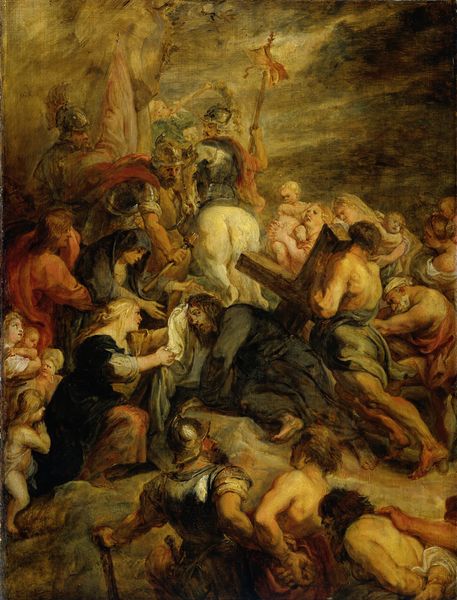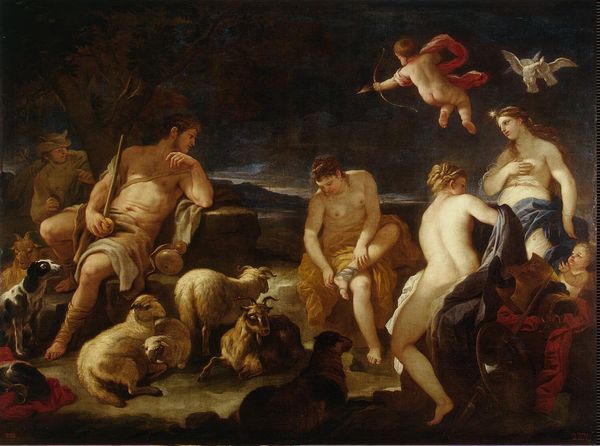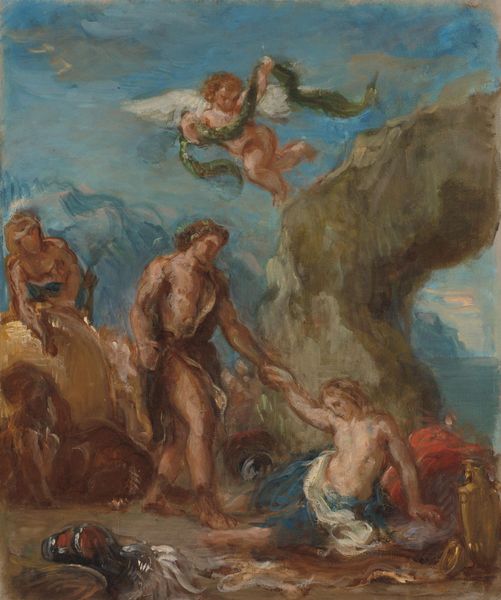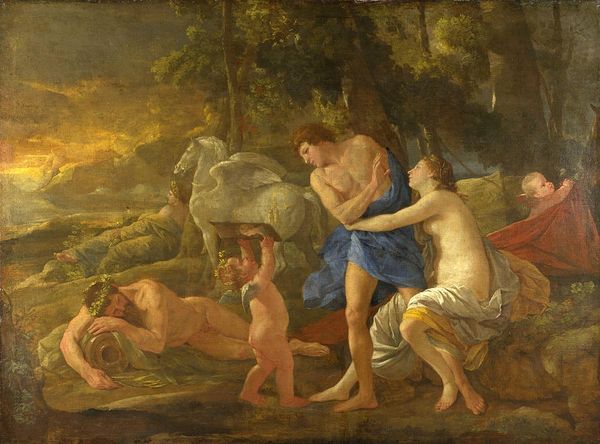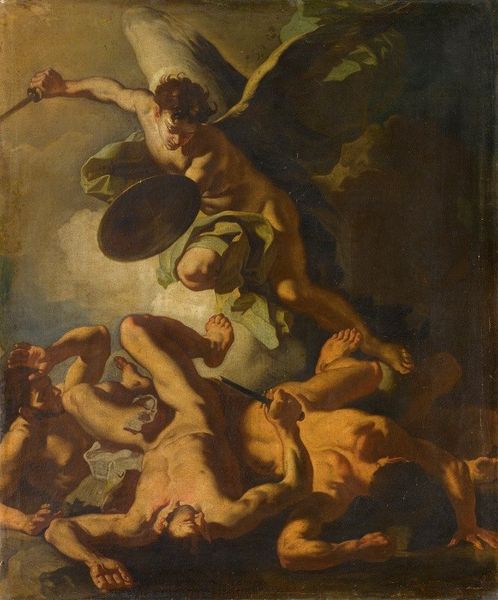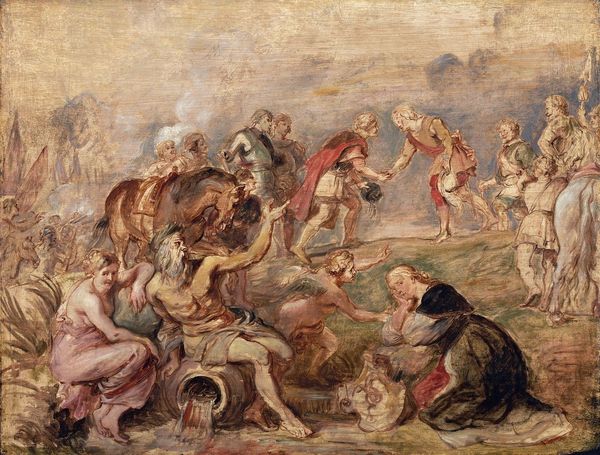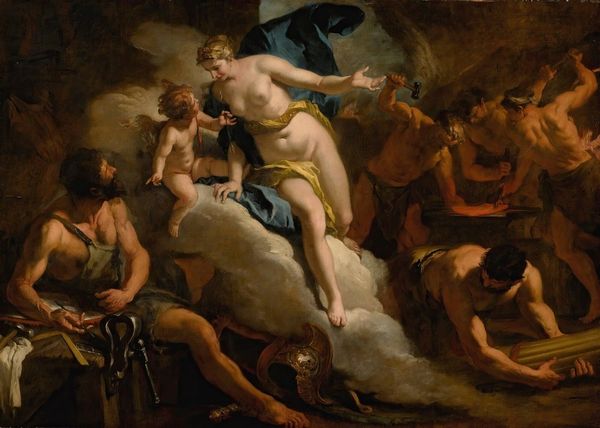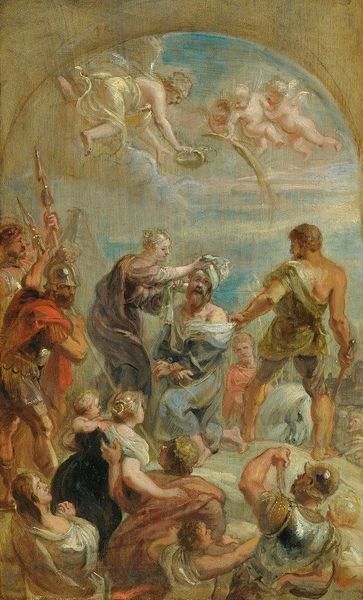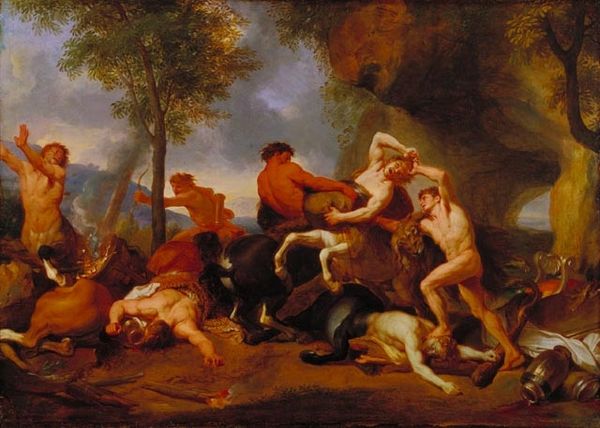
painting, oil-paint
#
allegory
#
narrative-art
#
baroque
#
painting
#
oil-paint
#
landscape
#
figuration
#
oil painting
#
famous-people
#
underpainting
#
mythology
#
painting painterly
#
history-painting
#
academic-art
Dimensions: 156 x 194.5 cm
Copyright: Public domain
Editor: So, here we have Nicolas Poussin's "Queen Zenobia Found on the Banks of the Arax," painted in 1634 using oil paint. The earth tones create a somber mood. What strikes me most is how staged the figures seem, almost like a tableau vivant. What's your interpretation of this work? Curator: From a materialist perspective, consider the labor and the raw materials involved in producing this canvas and oil paint in the 17th century. Pigments especially were expensive. The very act of creating such a lavish artwork was a display of wealth and power, both for the artist and his patron. Think about who had access to this kind of artistry. And consider what stories they chose to tell. What does the legend of Zenobia represent here? Editor: A defeated queen, discovered after her downfall… so it’s about power, then? A meditation on its loss and the spectacle of that loss being consumed? Curator: Precisely! Think about the consumption of such images. The academic style flattens labor. But who were the people mixing paints, preparing canvases, maybe even posing as models? Their labor is obscured in favor of the grand narrative, turning even human suffering into spectacle. How does this contrast with, say, folk art produced with readily available materials, focused on more localized stories and concerns? Editor: I hadn't thought about it that way – the raw materials as an entry point to understanding labor and social structures of the time. It highlights the contrast between elite production and more commonplace creation. Curator: Indeed. Examining the material conditions of its production lets us see beyond the surface narrative and glimpse the social forces at play in creating and consuming art like this. Editor: I’ll never look at a painting the same way again. Focusing on what it's made of opens a whole new understanding.
Comments
No comments
Be the first to comment and join the conversation on the ultimate creative platform.
